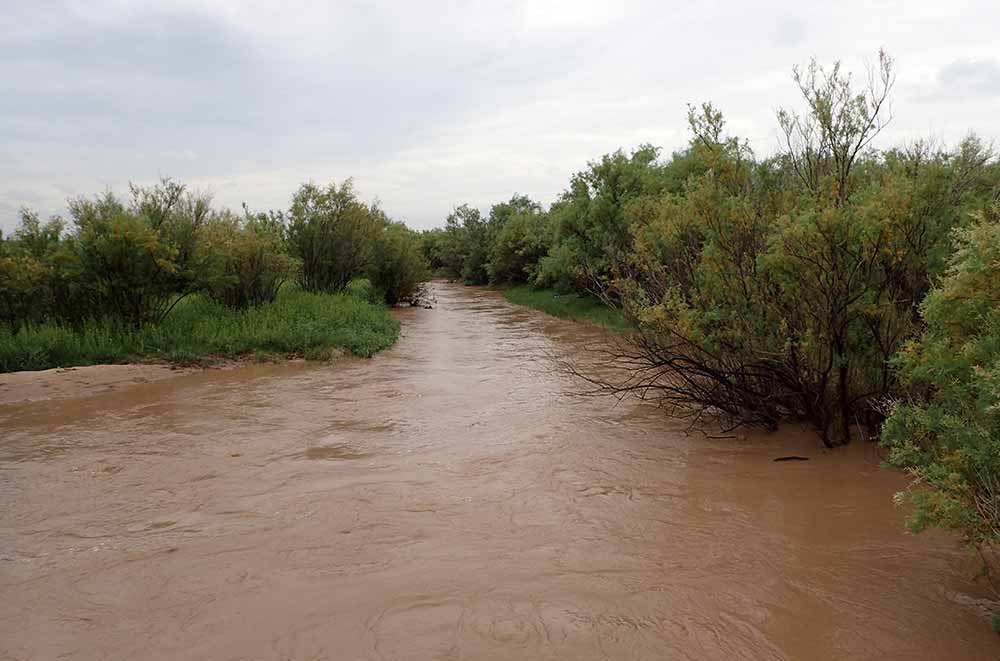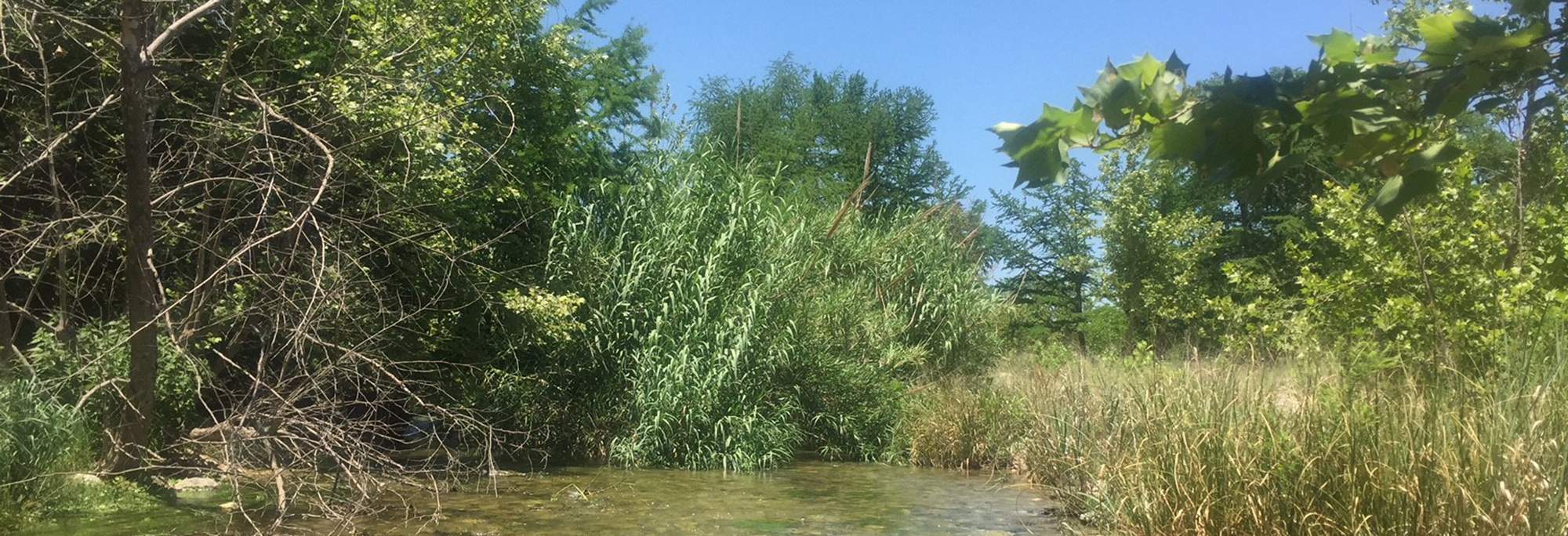Restoring Texas Streamsides
The health of rivers and streams depends on more than just the water. The ‘riparian’ areas along these waterways play a key role in filtering, storing, and releasing water. An un-mowed buffer zone with healthy, native plants also reduces erosion, provides wildlife habitat, supplies shade, and enhances opportunities for outdoor recreation such as fishing and kayaking. When non-native plants invade, they crowd out native species and degrade these important habitats and these riparian buffers lose some of their capacity to provide these services.
Saltcedar Management
Saltcedar (Tamarix spp.) is non-native to Texas and has become highly invasive across millions of acres of the Southwest. Ground-nesting birds such as turkey and quail suffer from saltcedar invasion as do fishes that have specific habitat requirements. Saltcedar, in contrast to mesquite and other nuisance brush species, grows in dense thickets across river floodplains and can consume large quantities of water and reduce water availability. Saltcedar thickets growing along river banks displace native plants and degrade habitat for wildlife. Thickets also trap sediment and alter the shape of the river channel. As the channel deepens, crossings can become impassable, the river’s ability to overflow its banks is lessened, and water quality is reduced. Management of saltcedar using targeted, aerial herbicide application can help begin to restore habitat for a diversity of fish and wildlife species and support healthy river function. In 2015, TPWD began a partnership with landowners and other agencies to manage saltcedar in the Upper Brazos River watershed. These efforts are ongoing, with aerial herbicide treatment provided at no cost to landowners. Learn more about Saltcedar Management on the Upper Brazos River

Arundo Control Efforts
Arundo donax, also known as giant reed or carrizo cane, has invaded rivers, streambanks, and ditches throughout the southern U.S. This grass grows to 30 feet tall, forms dense stands that crowd out native plants and consumes large amounts of water. Arundo can also worsen flooding, harbor cattle ticks and feral hogs, and even threaten border security. It is also highly flammable and poses a fire hazard in infested areas.
Arundo relies on flooding and disturbance to spread to new areas. A single fragment of root or cane can float downstream and form a new patch if it ends up in a moist area. Mowing of Arundo can spread fragments that form new patches along roadway ditches. Contaminated fill dirt can also carry plant fragments and create a new infestation. Preventing the spread of Arundo is much more cost effective than dealing with it once it has become established. The Arundo Control Man program provides tips for anyone working in construction, right-of-way management, and parks maintenance to help prevent it from moving to new areas.
Several watershed-scale efforts are underway to manage Arundo in priority areas. These efforts rely on partnerships with private landowners, other agencies, and nonprofits to succeed at gaining control of Arundo infestations. Spot treatments of aquatic-labeled herbicides are provided at no cost to landowners; this control method has the least impact on stream ecosystems. The Healthy Creeks Initiative, led by TPWD, works to manage Arundo across the Blanco, Guadalupe, Llano, Medina, and Pedernales river watersheds (Bandera, Blanco, Comal, Gillespie, Hays, Kerr, Kimble, and Kendall counties). The Pull. Kill. Plant. program is led by the Nueces River Authority and is active in the Nueces, Frio, Dry Frio, Leona, Sabinal, and Rio Grande river watersheds (Frio, Real, Uvalde, Zavala, and Val Verde counties).
